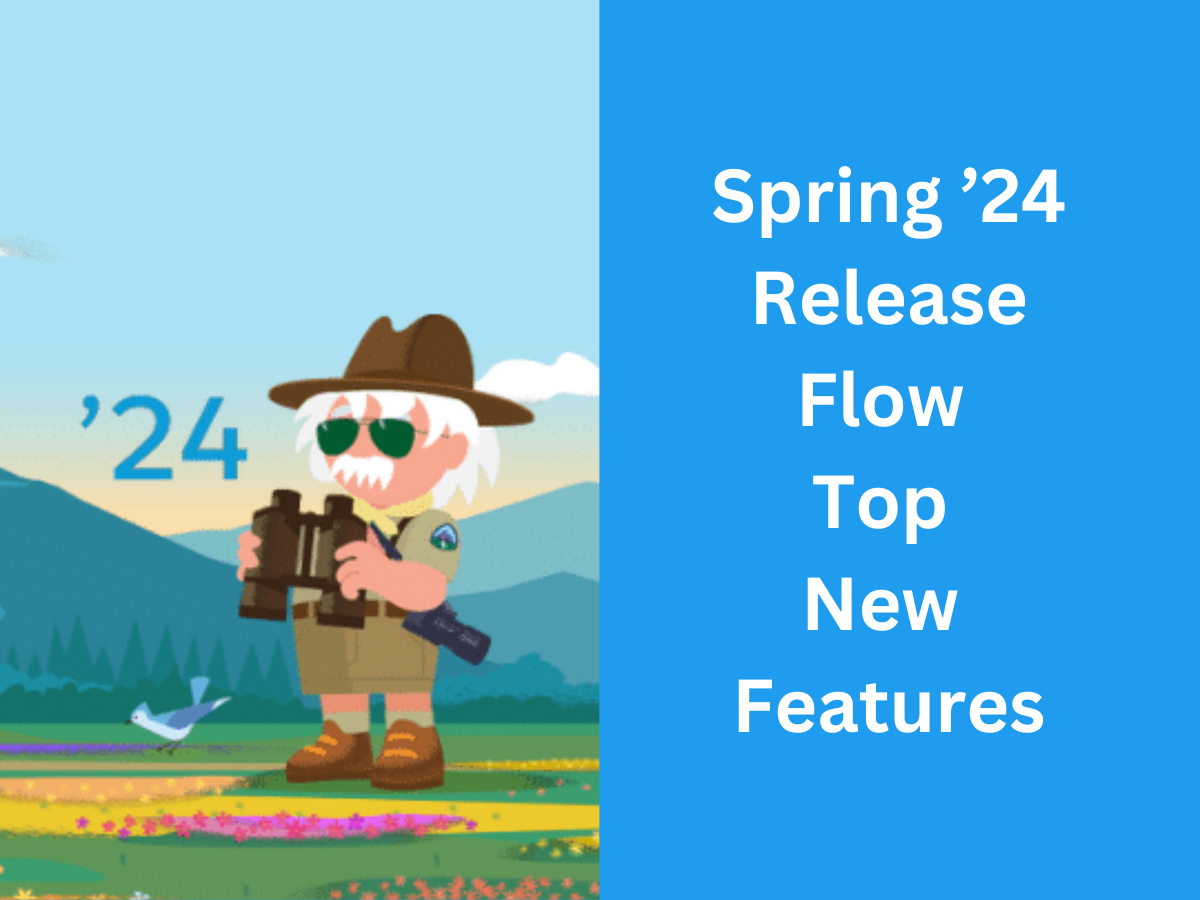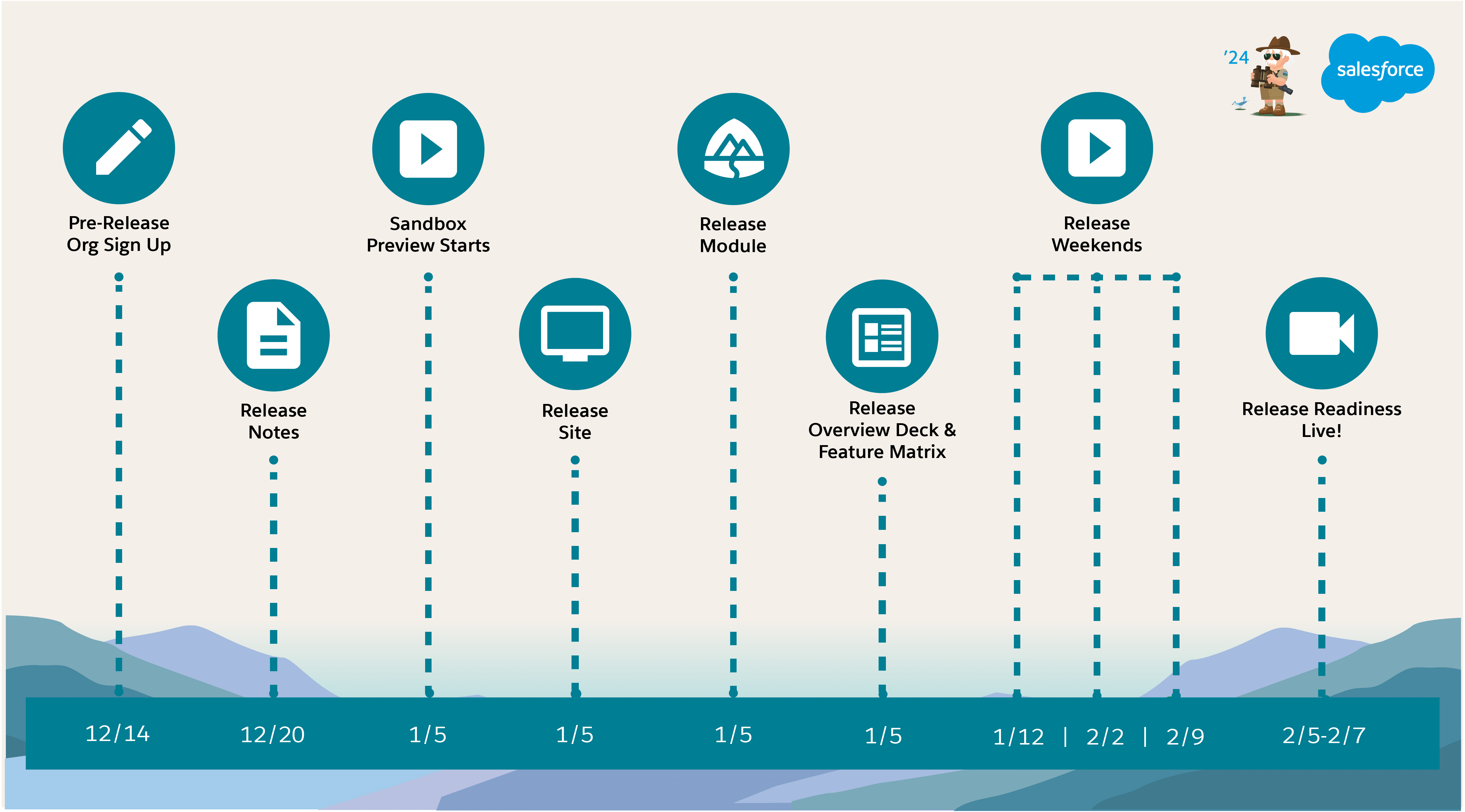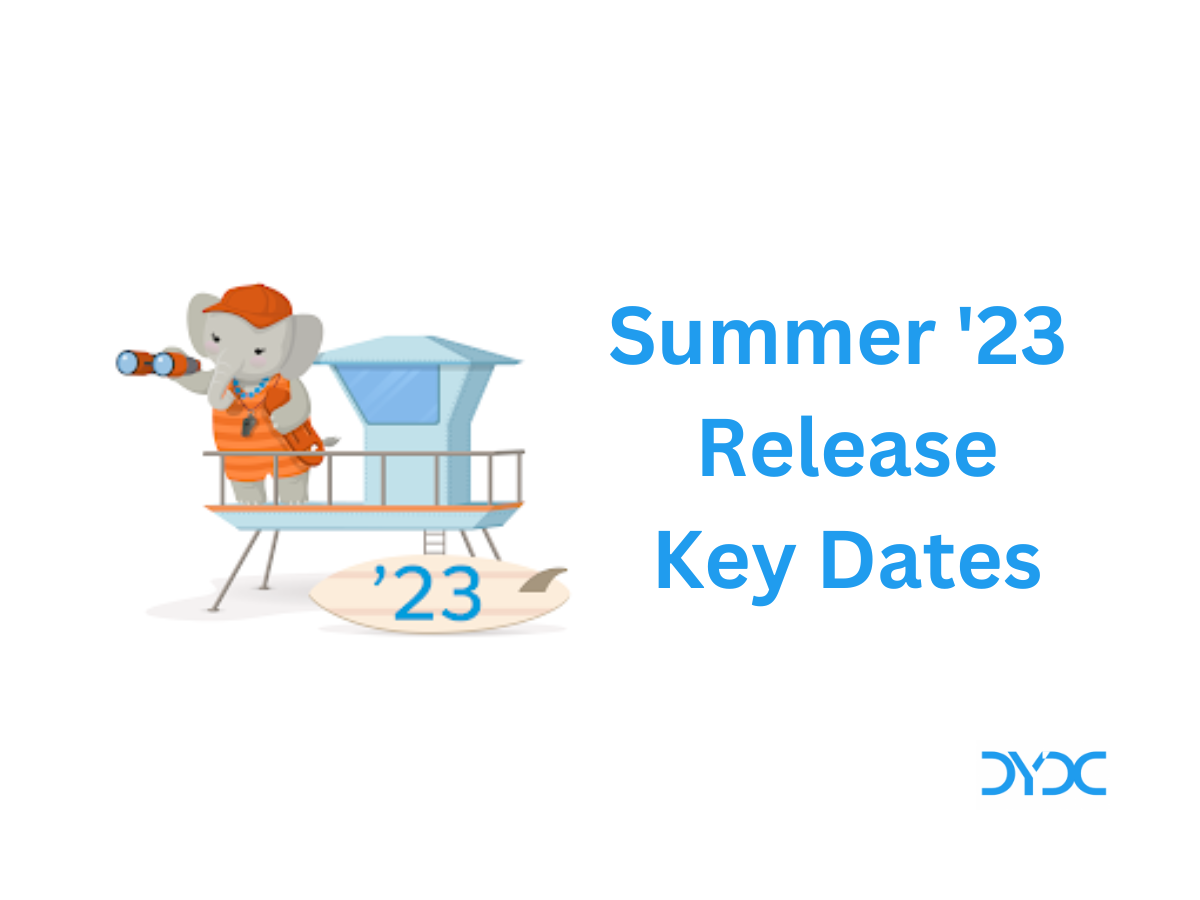Salesforce Spring ’22 Release Flow Top 10 New Features.
Salesforce Spring ’22 Release Notes are out here are some the new Flow Features we are excited about.
1. Place Flow Elements Automatically with Auto-Layout (Generally Available)
Building flows and aligning elements is easier with auto-layout. Elements on the canvas are spaced, connected, and aligned automatically, saving you time and keeping your canvas neatly organized. Auto-layout is now the default canvas layout for flows. User templates also now open in auto-layout.

Source: Place Flow Elements Automatically with Auto-Layout (Generally Available)
2. Visualize All Your Record-Triggered Flows in One Place with Flow Trigger Explorer
See and manage your record-triggered flows with Flow Trigger Explorer, a new tool that’s more visual and interactive than the Flows list view. Flow Trigger Explorer shows all of the flows that are associated with a specified object and that run when a record is created, updated, or deleted. For example, quickly see all flows that are triggered to run when a case record is created.

In Flow Trigger Explorer, select an object (1) and a trigger (2) to see flows that run when a record for that object is created, updated, or deleted. See all of the before-save (3) and after-save flows (4) that run for the same object and trigger. Click a flow label (5) to open the flow in Flow Builder in a new tab. See any asynchronous paths (6) that are associated with flows that run for the same object and trigger. Click a menu dropdown and select Flow Details and Versions (7) to see details and activate or deactivate versions of the flow.
Source: Visualize All Your Record-Triggered Flows in One Place with Flow Trigger Explorer
3. Define the Run Order of Record-Triggered Flows for an Object
Specify a trigger order value to determine the run order of before-save or after-save flows for the same object. Declaratively configure a flow to run before or after another flow. Order your flows to help ensure consistent results without creating overly complex flows, letting you divide automation by teams or logical owners.
When you save a before- or after-save record-triggered flow, specify a trigger order value from 1 to 2,000. In a flow that’s already saved, specify a trigger order value in the flow’s version properties.

- Flows with the same trigger (before- or after-save) on the same object with trigger order values from 1 to 1,000 run in ascending order (1, 2, 3, and so on). Multiple flows with the same trigger order value run in alphabetical order based on the flows’ API names.
- Flows without trigger order values run next and in the order of their created dates. Flows in Winter ’22 and before run and continue to run in this order, unless you define a trigger order value for them.
- Flows with trigger order values from 1,001 to 2,000 run next and in ascending order. Any ties are settled using the flows’ API names.
When you order a large number of flows, a best practice is to evenly distribute the trigger order values, for example, 10, 20, 30, or 100, 200, 300. Then later, you can easily slot another flow in between, for example, between 10 and 20. This practice can help you avoid changing the trigger order values for preexisting flows.
Activating, deactivating, or changing the order for one flow can cause the order for other flows to be automatically updated. Ordering record-triggered flows has no direct effect on any associated scheduled or asynchronous paths.
Source: Define the Run Order of Record-Triggered Flows for an Object
4. Configure Flows with Your Keyboard and Screen Reader
With new accessibility options, you can create and edit flows and screens using only your keyboard. Screen readers also now describe elements within a canvas, as well as elements’ positions relative to each other. In auto-layout, these keyboard shortcuts are updated.
| ACTION | MACOS | WINDOWS |
|---|---|---|
| Switch section focus | F6, Shift+F6 (backwards) | F6, Shift+F6 (backwards) |
| Switch item focus | Tab, Shift+Tab (backwards) | Tab, Shift+Tab (backwards) |
| Navigate element menu | Arrow keys | Arrow keys |
| Configure the selected component | Enter | Enter |
| Reorder the selected component | Spacebar, then arrow keys | Spacebar, then arrow keys |
| Cancel reordering | Esc | Esc |
For editing screen elements, these keyboard shortcuts are updated.
| ACTION | MACOS | WINDOWS |
|---|---|---|
| Return to canvas | Shift+F6 | Shift+F6 |
| Switch item focus | Tab, Shift+Tab (backwards) | Tab, Shift+Tab (backwards) |
| Configure the selected component | Enter | Enter |
| Reorder the selected component | Spacebar, then arrow keys | Spacebar, then arrow keys |
| Cancel reordering | Esc | Esc |
Source: Configure Flows with Your Keyboard and Screen Reader
5. Make Custom Screen Components React to Other Components on the Same Flow Screen (Pilot)
Design a flow screen with custom screen components that respond to updates on the same screen, and reduce the number of screens for a user to navigate through. Previously, you placed these components on separate screens.
For example, you design a flow screen where a user searches for a knowledge article. As the user enters a string in a Text component, a custom Knowledge Article Search component searches using the text input value and returns the search results on the same screen. Another example is including a custom component that performs a calculation using numerical outputs from other components on the same screen.
Source: Make Custom Screen Components React to Other Components on the Same Flow Screen (Pilot)
6. Convert Workflow Rules to Flows with the Migrate to Flow Tool (Beta)
Use the Migrate to Flow tool to convert your workflow rules into flows. Flow Builder can do everything that workflow rules can do—and more.
You can migrate workflow rules that contain these items:
- Field-based criteria
- Field updates
- Email alerts
- Outbound messages
- Time-dependent workflow actions
- Rule criteria formula that’s set to true (unless evaluation criteria is also set to created, and any time it’s edited to subsequently meet criteria)
Gentle reminders are now included in workflow rules to prompt you to consider creating flows in Flow Builder instead of creating workflow rules.
From Setup, in the Quick Find box, enter Migrate to Flow, and then select Migrate to Flow (Beta). Or from Setup, on the workflow rules page, click Migrate your workflow rules to flows. Select a workflow rule (1) and click Migrate to Flow (2).

Test your resulting flow in Flow Builder (1). Then deactivate the workflow rule that you converted to a flow and activate the new flow (2).

Source: Convert Workflow Rules to Flows with the Migrate to Flow Tool (Beta)
7. Filter Items into a Collection in Flow Builder
Now you can filter unwanted data from your collections in Flow Builder. Use the Collection Filter element to select a collection and define conditions. When the flow runs, the element outputs a collection with only the items that meet those conditions, leaving your original collection intact.
When defining conditions, you can set the requirements using a formula or logic, such as All Conditions Are Met, Any Condition Is Met, or your own custom condition logic.

Source: Filter Items into a Collection in Flow Builder
8. Easily Add Frequently Used Elements to Record-Triggered Flows via Shortcuts
Now you can access your most frequently used elements from the top of the Add Element menu. When you create a record-triggered flow, add a preconfigured Update Records element that updates fields on the triggering record or an action that sends an email using an email alert. Shortcuts are available only for record-triggered flows in auto-layout mode.
Create a record-triggered flow and select Update Triggering Record or Send Email Alert. The Send Email Alert action is unavailable for before-save record-triggered flows, which don’t support Action elements.

Source: Easily Add Frequently Used Elements to Record-Triggered Flows via Shortcuts
9. Flow and Process Run-Time Improvements
These updates affect only flows and processes that are configured to run on API version 54.0 or later. Versioned updates let you test and adopt run-time behavior changes for individual flows and processes at your convenience. To change the run-time API version of a flow, open it in Flow Builder and edit the flow version properties. To change the run-time API version of a process, open it in Process Builder and edit its properties.
- After-Save Record-Triggered Flows Now Run Before Entitlements are Executed
- Now in the order of execution, after-save flows run before entitlements are executed, so that entitlements can include the record updates that after-save flows make. In API version 53.0 and earlier, after-save record-triggered flows still run after entitlements are executed.
- After-save flows now run immediately after processes created via Process Builder, without entitlements executing between them. For Salesforce admins who migrate to flows from processes, this change helps to ensure consistent results for entitlements.
- Approval and Time-Based Workflow Field Updates Now Execute Before-Save and After-Save Record-Triggered Flows
- Field update actions associated with approval processes and time-dependent actions in workflow rules now execute before-save and after-save record-triggered flows so that these update actions can incorporate flow automation. In API version 53.0 and earlier, these field update actions don’t execute flows, so certain record updates don’t trigger corresponding flows. Workflow rules and processes created via Process Builder are unaffected.
- As a result of this change, flows now run slightly more often and whenever Apex runs. This difference is most apparent in the execution of time-based workflow and approvals. For other types of save operations, there’s no impact.
- Flow triggers are executed only one time per entity per transaction. Even a record update doesn’t execute a flow trigger a second time on the same entity. Also, flow triggers are executed when you use the Data Import Wizard and specify to trigger workflow rules and processes when the imported records meet the criteria.
- These changes provide for a more straightforward understanding of the different scenarios in which before- and after-save record-triggered flows execute. For example, now when a field update action occurs, it’s easier to see when a flow executes.
- A Flow Error Email Is Now Sent for an Update Record Element That References an Invalid Record Variable
- An error email is sent if a flow executes an Update Record element that references an invalid record ID on a record variable. Previously, no flow error email was sent.
Source: Flow and Process Run-Time Improvements in API Version 54.0
10. Run Flows in User Context via REST API
With this update, a flow that runs via REST API uses the running user’s profile and permission sets to determine the object permissions and field-level access of the flow. This update was first made available in Spring ’22.
Previously, a flow ran in system context when the flow was executed via REST API. A flow that runs in system context has permission to access and modify all data.
With this update, the flow runs in the context of the user who is authenticated via REST API. When the flow runs via REST API, the running user’s profile and permission sets determine the object permissions and field-level access of the flow.
For example, the Update Account Type flow is run via REST API.
POST /v54.0/actions/custom/flow/Update_Account_Type
This update improves security in Salesforce by preventing you from unintentionally allowing users to create or edit records they don’t have access to.
Source: Run Flows in User Context via REST API
Please check Salesforce Spring ’22 Release Top 10 New Features for other key new features of Spring ’22 Release.
What is your favourite Salesforce Spring ’22 Flow New Feature? Please let us know in comments!


